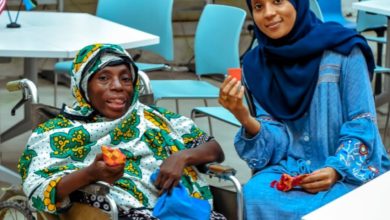Sports, creative industries positioned to transform Tanzanians by 2050

IN a bold step toward redefining its future, Tanzania has elevated sports and the creative industries to the forefront of its long-term development agenda.
Unveiled on Thursday in Dodoma by President Samia Suluhu Hassan, the National Development Vision 2050 outlines a transformative framework, positioning these two sectors not merely as recreational or cultural components, but as strategic engines for economic growth, innovation, youth empowerment and global competitiveness.
The recognition of sports and the creative economy in Vision 2050 reflects a broader strategic pivot and good news for those in the sectors. As the country sets its sights on becoming a resilient, high-middle-income nation, these sectors are no longer sidelined. Instead, they are treated as critical levers for inclusive development.
According to the Vision, Tanzania’s future competitiveness will depend significantly on its capacity to harness innovation, nurture talent and build a vibrant cultural identity that resonates both regionally and internationally. President Samia, while launching the Tanzania National Development Vision 2050, stressed that sports and creative industries must now be treated as priority sectors.
She insisted these are not side agendas. They are national development pillars. Sports, traditionally viewed through the lens of entertainment, are now framed as a multidimensional development tools.
However, Vision 2050 projects a sports sector that contributes directly to: Youth employment, through professions such as coaching, officiating, media, physiotherapy and sports management. Health promotion and social cohesion, especially among youths, too.
ALSO READ: Tanzania unveils sports growth vision
National branding, using international success to promote Tanzania’s image, can be achieved through these sectors as well. A key focus will, however, be the development of talent at the grassroots, supported by education systems, community programmes and nationwide access to sports infrastructure.
The government also plans to encourage private sector investment in leagues, facilities and sporting events, with a strong emphasis on gender equity and inclusion of persons with disabilities.
The underlying economic logic is clear that sports are becoming a competitive industry globally and Tanzania intends to capitalise on this trend. The creative economy, encompassing film, music, digital content, fashion, arts and design, is increasingly recognised as a core pillar of the 21st-century economy.
Vision 2050 identifies innovation not only as a means to economic competitiveness but also as a means of preserving and promoting Tanzanian cultural identity in the global arena. Creating a supportive ecosystem for creative talent, with access to capital, training and mentorship, is also a key to meeting expectations.
There is a need to strengthen institutions involved in education, research and technology to stimulate innovation. Also, establishing legal protections for intellectual property ensures creators benefit from their work. Formalising creative sectors such as music, film and fashion into sustainable economic contributors can result in vision.
By 2050, the goal is for Tanzania to become a leading African hub for cultural exports and innovation, with its creative economy serving both as a source of national pride and a driver of GDP growth.
Vision 2050 doesn’t merely articulate ambition; it demands action, as President Samia insisted. It is high time this transformation is measured not in speeches and documents, but in systems, institutions and opportunities created.
The government cannot do it alone; the active involvement of all stakeholders will be essential. To realise the potential of sports and creative industries, strategic investments in infrastructure, education and policy reform will be required.
Equally vital will be a shift in societal attitudes: Treating artists, athletes and innovators as professionals contributing to national development, not as peripheral entertainers. Vision 2050 reframes sports and creativity not as luxuries but as assets for transformation.
These sectors combine youth engagement, innovation, entrepreneurship and cultural identity, components that any modern economy must leverage. In repositioning these areas as pillars of its long-term strategy, Tanzania signals to the continent and the world that its growth will not only be industrial or agricultural, but imaginative, inclusive and uniquely Tanzanian.





